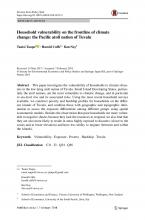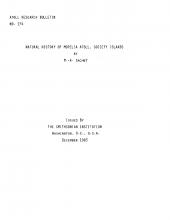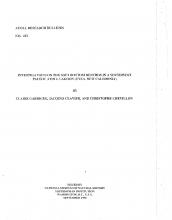Investigations on the soft bottom benthos in a Southwest Pacific atoll lagoon (Uvea, New Caledonia)

Island and Ocean Ecosystems
Available Online
Chevillon Christophe
,
Clavier Jacques
,
Garrigue Claire
1998
Microbenthos and macrobenthos were quantitatively studied at 62 stations distributed regularly over the Uvea Atoll lagoon (850 km2). Sampling was performed using both SCUBA and a 0.1 m2 Smith Mclntyre grab. Mean estimates of ATP, chlorophyll a and phaeopigments were 297.3ng/cm2, 77.01 mg/m2 and 35.28 mg/m2 respectively. The mean macrobenthic biomass was 4.14 gAFDW/m2 of which the macrophytobenthos accounts for 39%. The benthic biomass decreased from the coast to the deepest parts of the lagoon. Macrophytes were most abundant in the coastal area and became progressively scarcer with increasing depth. By comparison, sessile species dominated on hard substrates in intermediate and deep zones. The abundance of the surface-deposit feeder group, that dominated the trophic structure of zoobenthos (33% of the macrofauna biomass), could be explained by a microphytic biomass six times higher than macrophytobenthic one in terms of carbon. Carnivores (32%) were mainly represented by necrophagous species, and filter-feeders (27%) by bivalves. Herbivores were rare. Four main benthic communities were identified on the basis of their macrobenthic assemblages using a Detrended Correspondence analysis. They corresponded to (1) a coastal zone, with the highest mud percentage in sediments, (2) an intermediate zone, with moderate depth and dominated by hard substrates, (3) a back reef zone, with thick sand layers, and (4) a deep zone dominated by hard substrates. Relative distribution of the trophic groups varied according to the different zones and suggests distinct functional characteristics for the different benthic assemblages. From a biogeographic point of view, this study highlighted the richness of the Uvea Atoll lagoon in terms of benthic species and biomass, compared to other central Pacific atoll lagoons.






